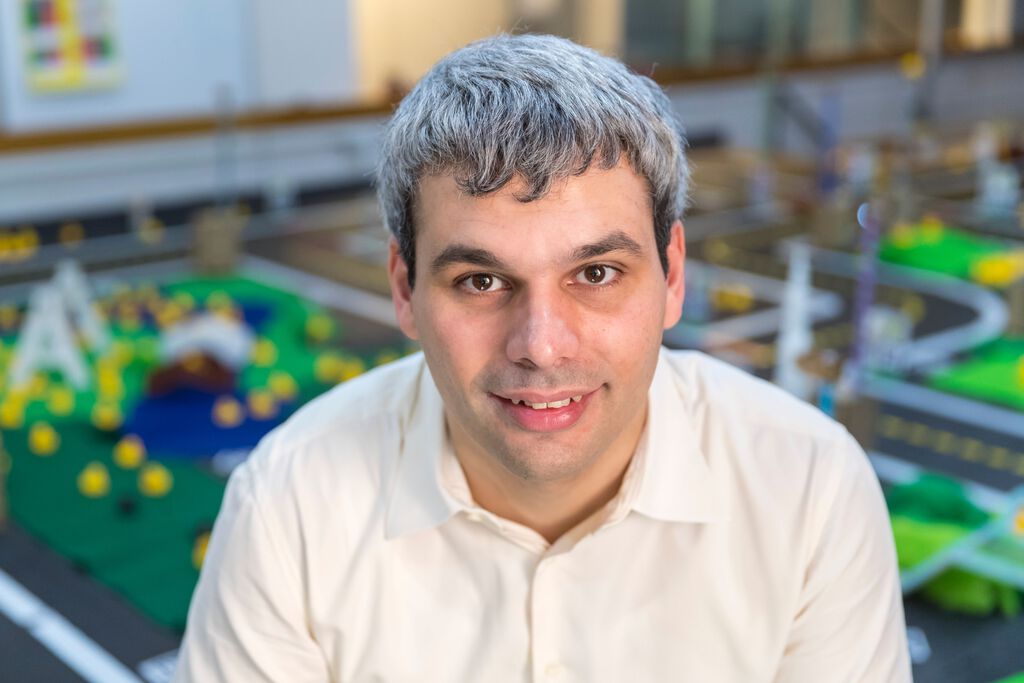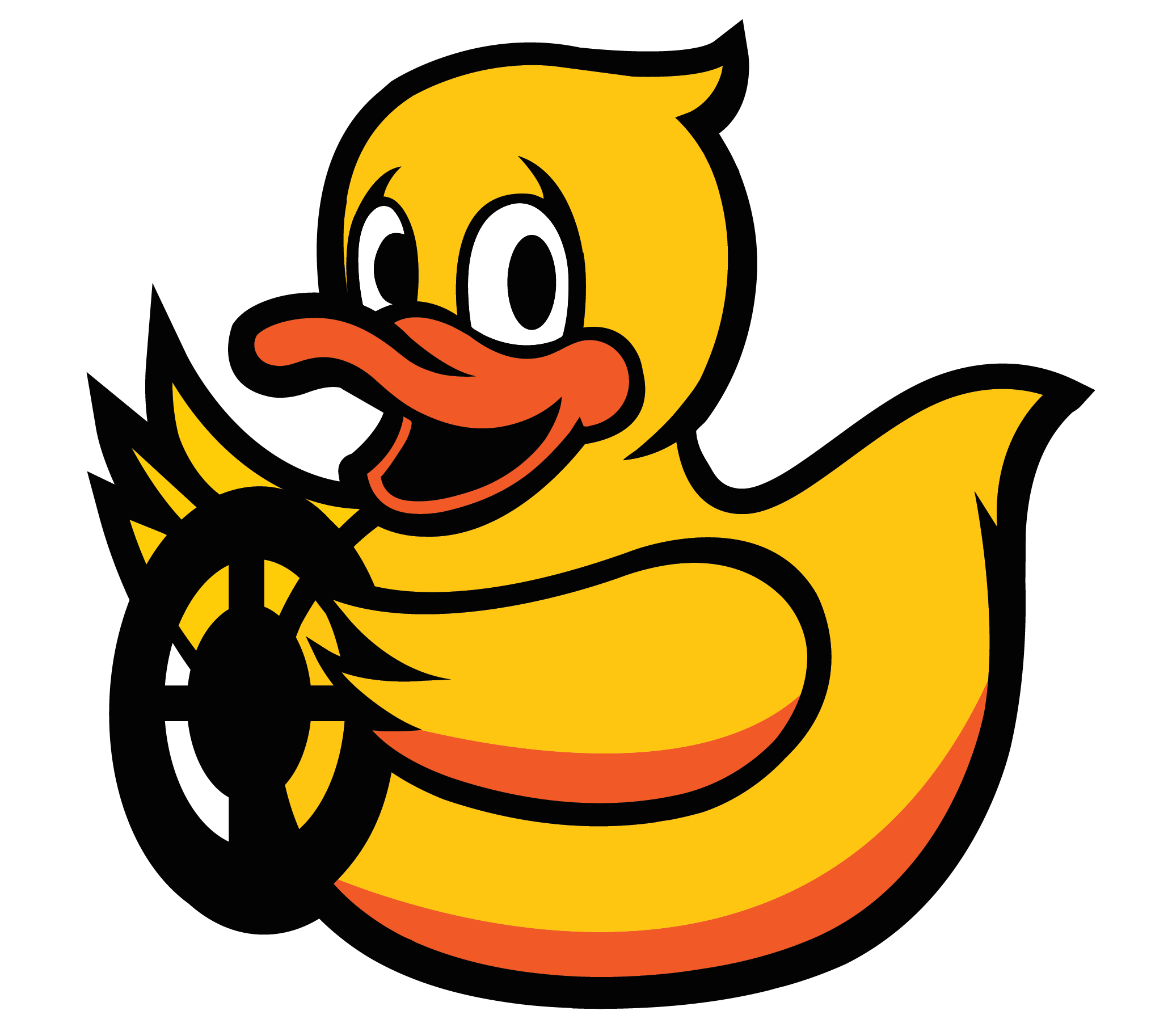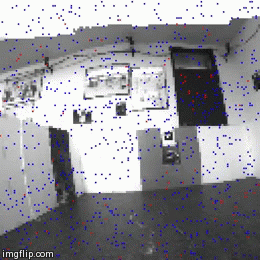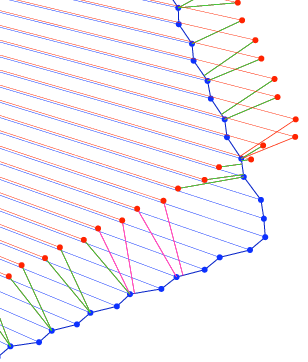
Fig. 1. Andrea, Dec 2018. Other portraits by or with robots and roboticists.
acensi @ idsc.mavt.ethz.ch
andrea @ duckietown.org
andrea @ zupermind.com
PGP key
Address:
Sonneggstrasse 3
ML K 32.2
8092 Zürich
Switzerland
Andrea Censi
I work in the areas of systems and robotics (embodied artificial intelligence).
This is what I do:
-

I am Deputy Director for the Chair of Dynamic Systems and Control under Emilio Frazzoli in the Department of Mechanical and Process Engineering at ETH Zürich.
ETH students: for important administrative requests, please cc our lab manager Annina Fattor (afattor@ethz.ch), who will make sure things will be done on time.
-

I am president of the Duckietown Foundation, a robotics education and outreach effort.
- I am founder of Züpermind, a start-up about computational design. (Currently in stealth mode.)
I obtained a Ph.D. in Control & Dynamical Systems from 🌴 Caltech 🌴 in 2012 in Richard Murray's group.
I grew up in Italy and obtained an M.Eng. degree in control & robotics from Sapienza University.
Last update: Dec 2020
SupervisionPh.D. students I work with:
Postdocs I work with:
*: co-supervised with Saverio Bolognani
|
Misc
|
Teaching
| for everybody | @ ETH Zürich | |
| Embodied Autonomy | The free online Self-driving cars with Duckietown MOOC with EdX will start February 2021. | The Autonomous Mobility on Demand (AMOD) class is offered every fall. Check the catalogue for more information. |
| Applied Category Theory, co-design |
Applied Compositional Thinking for Engineers (ACT4E) is a free online course happening in January 2021. | The (more intense) ETH Zürich version of ACT4E will be offered Spring 2021. Check the catalogue for more information. |
What's new2020
2019Lots of things happened, but there was no time to write it all down!
2018Lots of things happened, but there was no time to write it all down!
2017
20162015
|
Bio news
|
Other cool stuff
The Duckumentary of the first edition of the Duckietown class.
Previous work
Click here to see a summary of my research as of 2016. Nowadays the new content is on students' pages and this part is not updated anymore.
My research
Here's what's up: The robots are coming! Please see here to check the likelihood that your job will be replaced by a machine. But don't worry too much; the thing is, we don't really know how to design complex robotic systems, despite the headlines.
I work on the Science of Embodied Autonomy. The engineering applications of my work are towards making complex autonomous robotic systems more robust, more efficient, and easier to design. More generally, I want to understand what are the principles underlying embodied intelligence, both natural and artificial.
1. Co-Design
I am working on a new theory of “co-design” to unify all aspects of the design of robotic systems, including energetics, actuation, sensing, and computation.
For more information, please see the site co-design.science.
New: an online demo at demo.co-design.science.
A mathematical theory of co-design.
Technical Report, Laboratory for Information and Decision Systems, MIT, September 2016.
Submitted and conditionally accepted to IEEE Transactions on Robotics.
 pdf
pdf supp. material
supp. material
This paper introduces a theory of co-design that describes "design problems", defined as tuples of "functionality space", "implementation space", and "resources space", together with a feasibility relation that relates the three spaces. Design problems can be interconnected together to create "co-design problems", which describe possibly recursive co-design constraints among subsystems.
Uncertainty in monotone co-design problems.
IEEE Robotics and Automation Letters, February 2017.
 pdf
pdf supp. material
supp. material
This paper concerns the introduction of uncertainty in the MCDP framework. Uncertainty has two roles: first, it allows to deal with limited knowledge in the models; second, it also can be used to generate consistent relaxations of a problem, as the computation requirements can be lowered should the user accept some uncertainty in the answer.
2. Robotics education and outreach
Duckietown: an open and inexpensive and flexible platform for autonomy education and research.
In IEEE International Conference on Robotics and Automation (ICRA). Singapore, May 2017.
 pdf
pdf supp. material
supp. material
This paper describes the Duckiebot and its software. With 29 authors, we made the record for a robotics conference.
Duckietown: an innovative way to teach autonomy.
In EduRobotics 2016. Athens, Greece, December 2016.
 pdf
pdf supp. material
supp. material
This paper describes the course design for Duckietown: learning objectives, teaching methods, etc.
3. Neuromorphic / bio-inspired control
I'm interested in co-design problems that couple sensing, computation, and actuation in a non-trivial way, especially from the point of view of design minimality and "joint inference and control".
In particular, I'm interested in the robotics applications of event-based neuromorphic vision sensors. These are a new kind of sensor that outputs a low-latency stream of eevents, generated every time there is a change in the local brightness perceived by a pixel, rather than a periodic series of frames.



Events from a neuromorphic sensor, in real time (left) and slowed down 50x (center). On the right, events superimposed with a CMOS sensor's output.
My research is guided by the questions:
- Theory: How can we formally say that this sensor class is better than another? For what tasks? In what environments?
- Algorithms: How can we obtain "zero-latency" event-based controllers?
- Systems: How can we integrate these sensors in existing control architectures?
A Power-Performance Approach to Comparing Sensor Families, with application to comparing neuromorphic to traditional vision sensors. In IEEE International Conference on Robotics and Automation (ICRA). May 2015.
bibtex
Low-latency event-based visual odometry.
In IEEE International Conference on Robotics and Automation (ICRA). May 2014.
 pdf
pdf supp. material
supp. material
Low-latency localization by active led markers tracking using a dynamic vision sensor.
In IEEE/RSJ International Conference on Intelligent Robots and Systems (IROS), 891–898. Tokyo,Japan, November 2013.
 pdfdoi
pdfdoi supp. material
supp. material
Controlling free flight of a robotic fly using an onboard vision sensor inspired by insect ocelli.
Journal of the Royal Society Interface, August 2014.
 video
video supp. material
supp. material
The world is full of natural robots, which are informally called “animals.” I have worked on the identification of fruit-fly stimulus-elicited behavior, with Dickinson and Straw. This kind of work is interesting for an engineer, because it can be seen as reverse-engineering of an existing solution. Lately, I'm thinking about how to make this duality between analysis (biology) and synthesis (robotics) more formal. I'm very interested in possible collaborations on this topic.
Discriminating external and internal causes for saccade initiation in freely flying Drosophila.
PLOS Computational Biology, February 2013.
 pdfdoi
pdfdoi supp. material
supp. material
The robot fly was blind but now it sees! (full screen; paper)
A fruit fly's perspective on the world (full screen; paper)
Some recent workshops on these topics:
4. Sensorimotor Learning and Bootstrapping
Imagine you are a brain-in-a-vat that wakes up connected to an unknown body through two streams of uninterpreted observationd and commands, without any prior knowledge of the sensors, actuators or environment. Would you be able to learn a model of your body and use it to perform useful tasks? This is the "bootstrapping scenario": the learning problem for an embodied agent in the limit of prior knowledge tending to zero.
Uninterpreted streams of observations and commands from a robotic sensorimotor cascade.
My research in this field is guided by the questions:
- Theory: How much prior knowledge is needed by an agent?
- Algorithmics: What are tractable classes of models for sensorimotor learning?
- Systems: How can we introduced learning and adaptivity functionality in traditional robotic control systems?
A recent talk (May 2015) about my learning work.
Bootstrapping Vehicles (full screen; paper)
Planning with learned diffeomorphisms (full screen; paper)
The video shows learning of a bilinear model of a sensorimotor cascade for a camera. The agent starts with no previous knowledge on the sensor geometry, and by correlating observations with commands, it can learn a generative model for the data. The same model can be used for learning the dynamics of different sensors (range-finder, camera, field sampler). See many other videos of related experiments.
Representative works:
Bootstrapping bilinear models of Simple Vehicles.
International Journal of Robotics Research, 34:1087–1113, July 2015.
 pdfdoi
pdfdoi video
video supp. material
supp. material

Calibration by correlation using metric embedding from non-metric similarities.
IEEE Transactions on Pattern Analysis and Machine Intelligence, 35:2357–2370, 10 2013.
 pdfdoi
pdfdoi supp. material
supp. material
Motion planning in observations space with learned diffeomorphism models.
In Proceedings of the IEEE International Conference on Robotics and Automation (ICRA), 2860–2867. Karlsruhe, Germany, 5 2013.
 pdfdoi
pdfdoi supp. material
supp. material
Learning diffeomorphism models of robotic sensorimotor cascades.
In Proceedings of the IEEE International Conference on Robotics and Automation (ICRA). Saint Paul, MN, May 2012.
 pdfdoi
pdfdoi supp. material
supp. material
Simultaneous calibration of odometry and sensor parameters for mobile robots.
IEEE Transactions on Robotics, 29(2):475–492, April 2013.
 pdfdoi
pdfdoi supp. material
supp. material
My dissertation:
Bootstrapping Vehicles: a formal approach to unsupervised sensorimotor learning based on invariance.
Technical Report, California Institute of Technology, 2012.
 pdf
pdf supp. material
supp. material
Recent workshop:
5. “Classic” robotics perception
At the beginning of my research career I worked on what we can now call “classic” robotics perception and planning problems.
Some recent work on the problem of pose-graph optimization, with Luca Carlone:
From Angular Manifolds to the Integer Lattice: Guaranteed Orientation Estimation with Application to Pose Graph Optimization.
IEEE Transactions on Robotics, April 2014.
 pdfdoi
pdfdoi supp. material
supp. material
Coherent measurements selection via l1 relaxation: an approach to robust estimation over graphs. In IEEE/RSJ International Conference on Intelligent Robots and Systems (IROS). October 2014.
bibtexA paper with Davide Scaramuzza on visual odometry:
Some papers on the algorithmics and the accuracy of pose tracking and localization using range data:
On achievable accuracy for pose tracking.
In Proceedings of the IEEE International Conference on Robotics and Automation (ICRA). Kobe, Japan, May 2009.
 pdfdoi
pdfdoi supp. material
supp. material
An ICP variant using a point-to-line metric.
In Proceedings of the IEEE International Conference on Robotics and Automation (ICRA). Pasadena, CA, May 2008.
 pdfdoi
pdfdoi supp. material
supp. material
An accurate closed-form estimate of ICP's covariance.
In Proceedings of the IEEE International Conference on Robotics and Automation (ICRA), 3167–3172. Rome, Italy, April 2007.
 pdfdoi
pdfdoi supp. material
supp. material
On achievable accuracy for range-finder localization.
In Proceedings of the IEEE International Conference on Robotics and Automation (ICRA), 4170–4175. Rome, Italy, April 2007.
 pdfdoi
pdfdoi supp. material
supp. material


Point-to-point ICP (left) vs point-to-line ICP (right).
Software
Most of my papers come with software and datasets in the spirit of reproducible research (subject to time constraints...). These are the software packages that were polished and documented enough for wider use.
Software users: It's always great to know that my software is used for something cool. Please send me an email if you do.
Some general-purpose software that came out as a side-effect of my research:
- PyContracts is a Python package that allows to declare constraints on function parameters and return values. It supports a basic type system, variables binding, arithmetic constraints, and has several specialized contracts (notably for Numpy arrays). As a quick intro, please see this presentation about PyContracts.
- Compmake is a Python library that provides “Make”–like facilities to a Python application, including job management and parallelization (multiple CPU on a single host, cluster computing using SGE, and experimental support for cloud computing using Multyvac).
Compmake overview (fullscreen)
Part 2: Compmake Basics
Part 3: Compmake+Multyvac
Part 4: Compmake+Starcluster
Some robotics-specific software packages:
- The CSM scan matcher.
This is currently maintained by Kuka. It is integrated in many ROS packages.

An ICP variant using a point-to-line metric. In Proceedings of the IEEE International Conference on Robotics and Automation (ICRA). Pasadena, CA, May 2008.
bibtex pdfdoi
pdfdoi supp. material
supp. material
- This odometry + sensor calibration package corresponding
to the following paper.

Simultaneous calibration of odometry and sensor parameters for mobile robots. IEEE Transactions on Robotics, 29(2):475–492, April 2013.
bibtex pdfdoi
pdfdoi supp. material
supp. material
Professional Service
-
I am Publicity Chair for ICRA 2016, the IEEE flagship conference on Robotics & Automation. In particular, I am responsible for creating the conference trailer, which involves distributing thousands of rubber duckies to all roboticists in the world.
See here for what we did for ICRA 2015.
- These are recent workshops that I helped organizing:
Personal
The 2.166 "Autonomous Vehicles" Elves (full screen)
The NERC Experience (robot prom) (full screen)
The deadline rush: a bit of performance art in the occasion of the 10th anniversary of my first deadline (full screen)
Graduation ceremony in first person (Jun 2013)
(full screen)
The ICRA 2015 trailer
I organized and edited the ICRA 2015
Trailer, which showcased some of the
conference's contributions in an accessible format. It
consisted of a short 30 seconds teaser, and a
long 4 minute version, in one of 8 languages:
English, Chinese, Japanese, Korean, Spanish, Arabic, French, and Italian.
For your records and for personal use (e.g. teaching an
intro robotics class),
here you can find the (huge) downloadable files.

 slides
slides